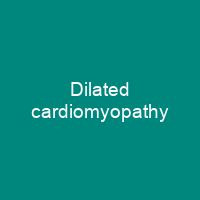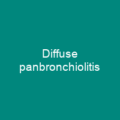Dilated cardiomyopathy is a condition in which the heart becomes enlarged and cannot pump blood effectively. Symptoms vary from none to feeling tired, leg swelling, and shortness of breath. Complications can include heart failure, heart valve disease, or an irregular heartbeat. Causes include genetics, alcohol, cocaine, certain toxins, complications of pregnancy, and certain infections.
About Dilated cardiomyopathy in brief

Mitochondrial deletions and mutations presumably cause DCM by altering myocardial ATP generation. The most common form of its transmission is an autosomal dominant pattern. Autosomal recessive ), X-linked, and mitochondrial inheritance is also found. The progression of heart failure is associated with left ventricular remodeling, which manifests as gradual increases in left-diastolic volumes, wallning, and a change in chamber geometry to a more spherical, less elongated shape. This process is usually associated with a continuous decline in ejection fraction associated with heart remodeling. The concept of cardiac remodeling was initially developed to describe changes that occur in the days and months following myocardium infarction. It may be the late sequelae of acute viral myocarditis, such as with Coxsackie B virus and other enteroviruses possibly mediated through an immunologic mechanism. Recent studies have shown that those subjects with an extremely high occurrence of premature ventricular contractions can develop dilated cardiomeopathy.
You want to know more about Dilated cardiomyopathy?
This page is based on the article Dilated cardiomyopathy published in Wikipedia (as of Dec. 31, 2020) and was automatically summarized using artificial intelligence.







